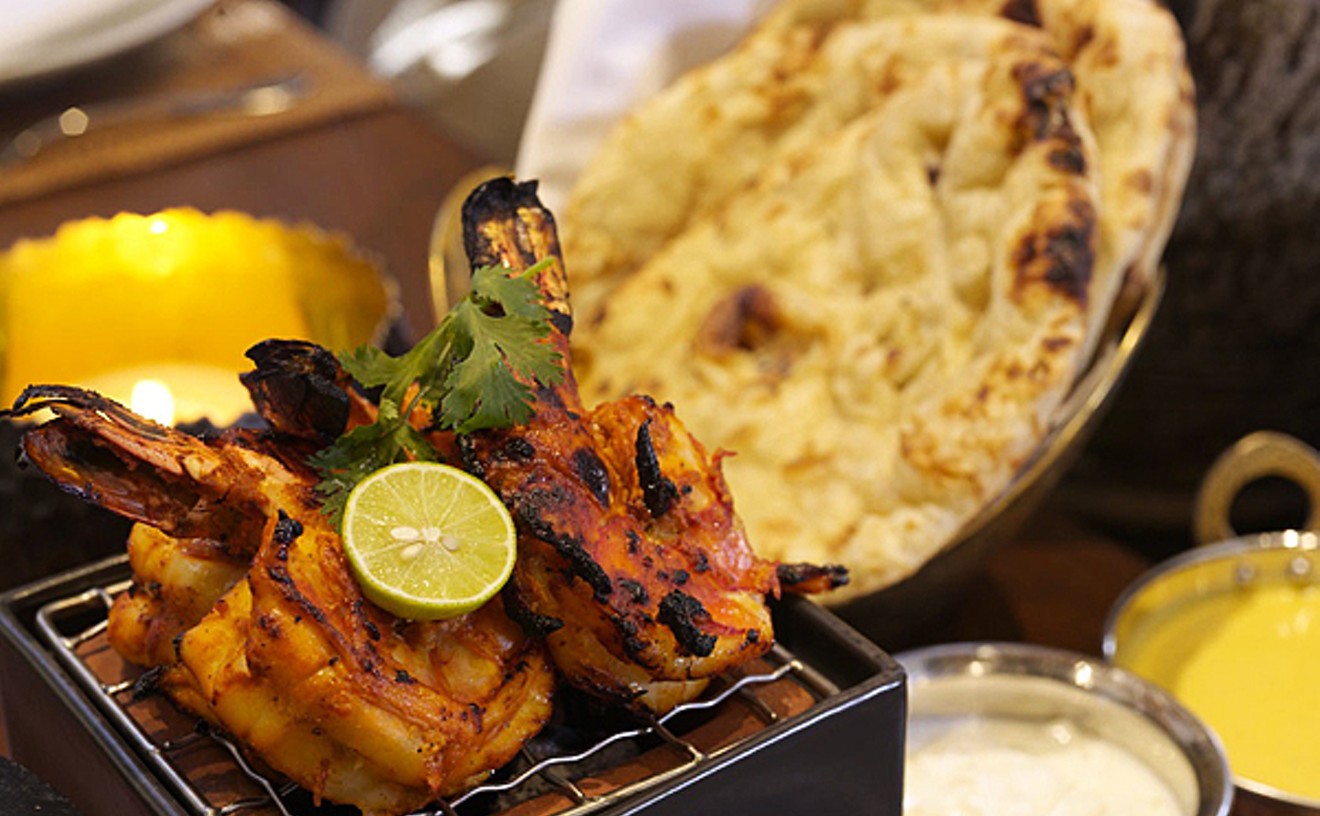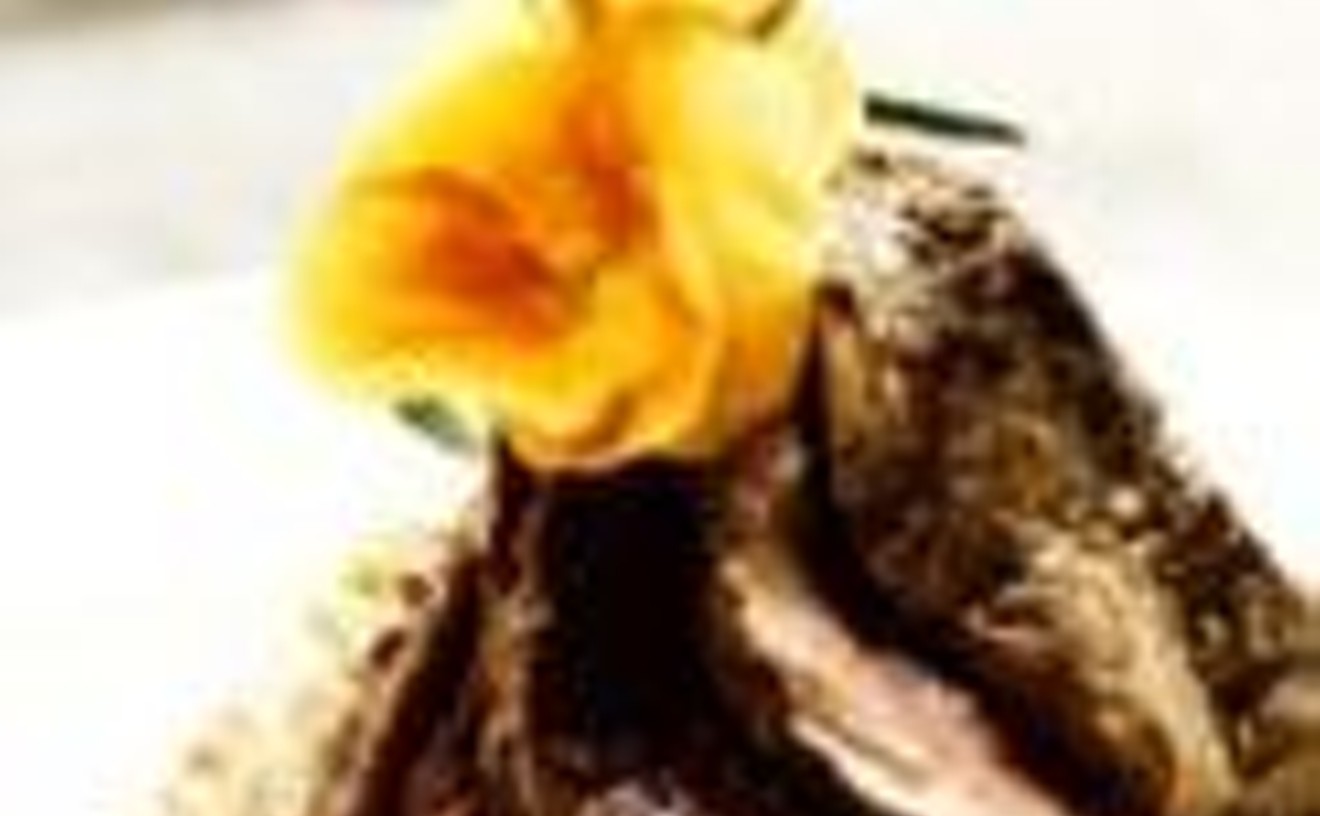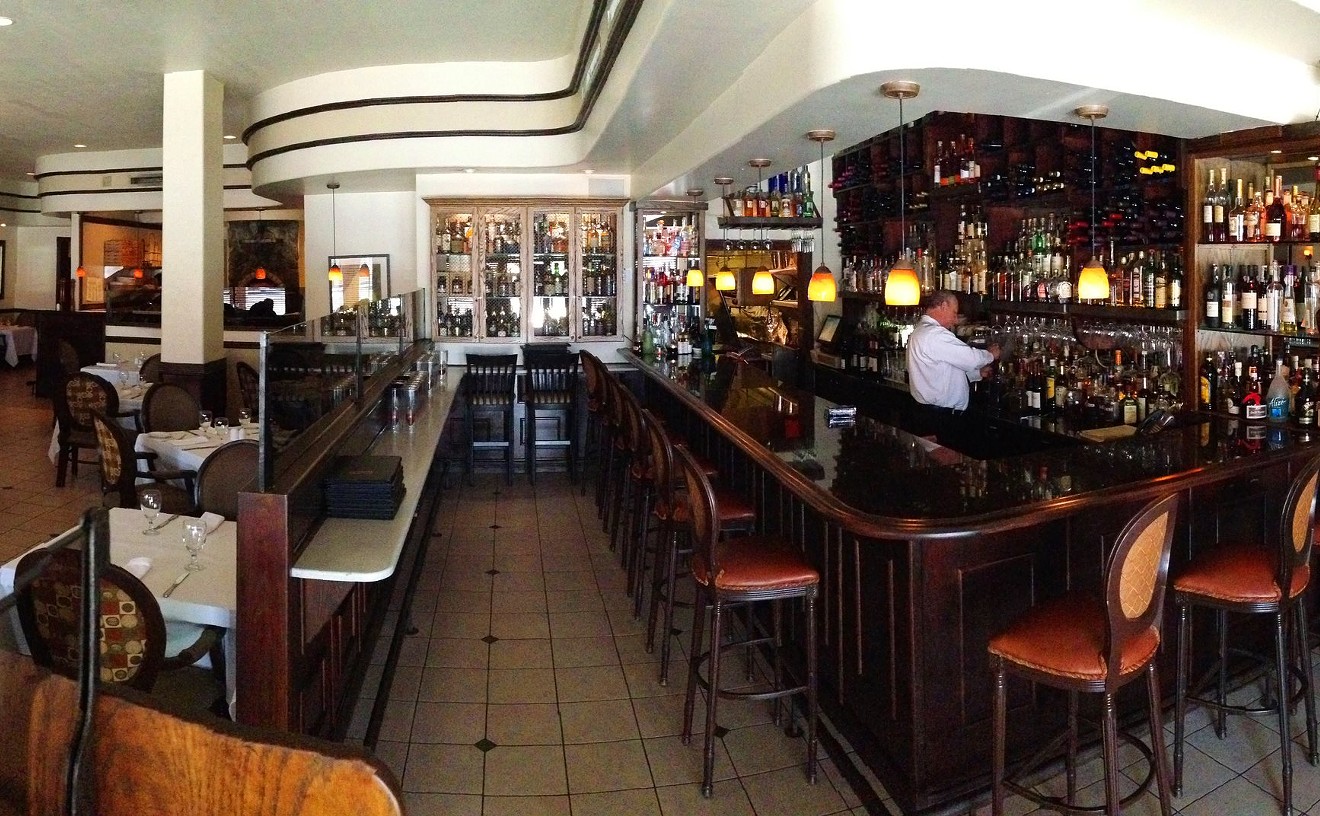Best New Restaurant
Zuma

Photo courtesy of Zuma
Zuma roared into downtown Miami last year like some flashy Japanese Harley (zuma-zuma!). Everyone looked. First they saw the stunning Tokyo-inspired room, with soaring ceilings and a sleek merging of natural textures — granite, rice paper, Indonesian wood. Then they took in an open sushi counter that dishes market-fresh sashimi, nigiri, and maki. There was an open robata grill turning out pristine cuts of charcoal-licked meats, poultry, seafood, and vegetables. And how about the open kitchen, orchestrated by chef Bjoern Weissgerber, expertly cooking rice hotpots, rib eye steaks with wafu sauce, spicy lobster miso soup, and scallop tartare with fresh wasabi ponzu? Food was plated in a breathtakingly delicate and artistic fashion, and it tasted almost shockingly delectable. There was a sake bar that served some 60 varieties of the elixir (including the luscious biwa no choju, brewed exclusively for Zuma) and an outdoor terrace overlooking the Miami River. All in all, they saw one of the most exciting new restaurants to pull onto our streets in years. They came, they saw, and they could only sigh in admiration.
- 270 Biscayne Blvd. Way, Miami, 33131 Map
- 305-577-0277
- zumarestaurant.com
Best Restaurant Spinoff
Jimmy'z Kitchen

Photo by Rebecca Blanco
The original Jimmy'z Kitchen has long provided freshly cooked meals from its tiny, weathered location in a little, rickety strip mall on Alton Road in Miami Beach. The venue is easy to pass without noticing, which is probably why lots of SoBe natives don't even know it exists. But the new Jimmy'z, on the ground floor of the Cynergi Building in Wynwood, is different. It's hard to believe it's a spinoff of the Alton Road classic. The place is so bright, shiny, and colorful that it looks a bit like a fast-food chain, but this fare is cooked slowly, with care, and is packed with enormous flavor. The much-expanded menu includes panini, salads (the jerk chicken and mango ensemble is peerless), and amazingly gratifying main courses that run the global gamut from shrimp creole to steak frites to seared ahi tuna to country beef stew. Mofongo, the Puerto Rican ode to plantains, protein, and garlic, is among the best in town. Beverage selections are extensive as well — there's a wide array of soft drinks and craft beers, along with wines by the bottle and glass. Prices are more than fair – just about everything is under $20, and there are plenty of good eats for less than $10. About the only thing that isn't different about this new place is chef/owner Jimmy Carey, who earned his chops at Miami's great and long-departed Brasserie Le Coze (itself a spinoff of NYC's legendary Le Bernardin). His gastronomic savvy has gone about as unnoticed as the original Jimmy'z, but that won't be the case for long.
- 2700 N. Miami Ave., Miami, 33127 Map
- 305-573-1501
- www.jimmyzkitchen.com
Best Deli
Goldstein's Prime

When Goldstein & Sons opened at Collins Avenue and 74th Street 30 years ago, there was no shortage of competition with three other kosher butcher shops and deli markets in the surrounding North Beach neighborhood. Today, rechristened with a slightly different name, the mom-and-pop store is the last one standing. Jews and gentiles from all over Miami-Dade's northeastern communities trek here for a truly authentic deli experience that has become a part of Miami Beach's rich Jewish roots. Goldstein's significance was recently documented in a short film by a young Jewish auteur named Aaron Davidson, titled A Slice of Life. In the minidoc, family patriarch Joe and his customers share recollections as the butcher, his son, and his grandchildren prepare orders. The images convey the pride and hard work the Goldsteins put in six days a week. At the deli counter you will find homemade gravlax for $6.25 per quarter-pound. Salads range from $4.99 (potato or cucumber) to $9.98 a pound (all-white tuna). Deli sandwiches overloaded with corned beef, pastrami, bologna, salami, turkey, roast beef, brisket, or tongue are available for $7.95 or $9.95. You can also purchase deli meats to take home. For holiday dinners and special occasions, Goldstein's offers a 12-person food platter for $189 that includes five rotisserie chickens or a 14-pound turkey, four quarts of homemade chicken soup with matzo balls, 12 pieces of gefilte fish, a potato kugel, two pounds of carrot tzimes, and four pounds of hot or cold side salads. But if you have a few more shekels, go with the $249 brisket platter. Goldstein's opens at 8 a.m. five days a week. Friday it's open from 7 in the morning until 4 in the afternoon. On Sundays, closing is 2 p.m., and Thursday it's 7 p.m. Monday through Wednesday, Goldstein's shuts at 6 p.m.
- 7419 Collins Ave., Miami Beach, 33141 Map
- 305-865-4981
- www.goldsteinsprime.com/Meats/Veal.aspx
Best Steak House
1500 Degrees
Food blogger Veggie Alice here. A bit about myself: I am a dental assistant by trade, so I can't say I have much in the way of culinary background — unless you count the time I served hors d'oeuvres at a party that Demi Moore attended! And I'm usually not big on steak houses; they're so dark and scary! But I make it a point to help my readers select the best places to dine, and my favorite steak house is 1500 Degrees. The steaks (some under $25, most under $34) are cooked at that temperature, which lends an ideally charred crust — that's neat and also hot! "Farm-to-table eating with a steakhouse sensibility" is the motto here, and vegetables culled locally are fantastic: fresh chickpeas; shisito peppers; charred Brussels sprouts; roasted beets; braised mustard greens smoked with Benton's bacon; duck-fat steak fries. Plus the earth-toned room doesn't look all dim and foreboding. Chef Paula DaSilva showed her chops on Hell's Kitchen, and at 3030 Ocean for many years before that. Veggie Alice likes female chefs. And, as I say, I really like 1500. It's a place for people like me who enjoy steaks but not necessarily steak houses. But those who like steak houses will like it too, mainly because of the steaks. Next week: Burger joints that sell smoothies!
Best Hotel Restaurant
The Restaurant at the Setai

Five things the Restaurant at the Setai offers that your favorite hotel restaurant might not: (1) An executive chef who, like the Setai's David Werly, trained under the incomparable Alain Ducasse. (2) A series of distinct kitchen stations — grill, tandoori, wok, Peking duck, and so forth — where chefs work in fully open view of the diners. That's entertainment! (3) Upscale, family-style renditions of multiple Asian cuisines, with menu items culled from China, Thailand, Singapore, India, Indonesia, and Malaysia. (4) Outdoor seating in a gorgeous Zen-like garden of ponds, lily pads, and promising beams of moonlight. (5) Puffy white barbecued pork buns, just like in Chinatown only a bit more delicate ($13). God, we love those.
- 2001 Collins Ave., Miami Beach, 33139 Map
- 855-923-7899
- www.thesetaihotel.com/culinary-experiences.jsp
Best Late-Night Dining
Gigi

Michael McElroy
It wasn't that long ago when Miami postclub dining implied a meal at Denny's or some regrettable late-night pizza joint lighted like a neon carnival. But now that we have Gigi, which stays open until 2 a.m. on weeknights and until 5 a.m. on weekends, that middle-of-the-night Grand Slam looks more and more like a Grand Whiff. Gigi is a brilliantly conceived restaurant — fun, delicious, Asian-accented food freshly prepared and sold at eminently affordable prices. Take the "Southern boy" barbecue ribs, or a delicious Gigi bun filled with anything from beef brisket to tandoor chicken. Or try a fantastic BLT with brown-sugar-cured pork belly and house-pickled vegetables on the side, or various noodle bowls, grilled items, and raw dishes. Homemade desserts are just $5, a 16-ounce can of Pabst Blue Ribbon just $2. The end of a long night of partying doesn't have to be a letdown anymore; with Gigi, it can become the best part of the evening — or morning, as the case may be.
- 3470 N. Miami Ave., Miami, 33127 Map
- 305-573-1520
- www.giginow.com
Best Restaurant to Bite the Dust
Talula

Two old married folks reminisce:
— Remember Talula?
— Oh, yes. And Joan Crawford too. They were my favorites.
— No, you old fool, I mean the restaurant on 23rd Street that we used to go to.
— Oh, of course. Those Italian kids.
— Frank and Andrea Curto-Randazzo. She was some chef! Wonder what happened to her?
— She went on TV, that's what happened to her.
— No, I mean after that, and after Talula closed.
— That dry-aged rib eye was the best!
— And the local grouper with lemon preserve and gnocchi...
— That was when I still had my teeth.
— Yes, those were the days.
— Remember Sunday brunches on that patio?
— And how the Randazzos brought us a bottle of our favorite wine during our 50th wedding anniversary dinner?
— I'll never forget the time I accidentally dropped that mass of hot mung bean noodles in my lap.
— It was a lovely restaurant, with fine cuisine, but it felt like a neighborhood Italian joint as well.
— I forget: When did Talula close?
— About a year ago.
— Remember Talula?
— Oh, yes. And Joan Crawford too. They were my favorites.
— No, you old fool, I mean the restaurant on 23rd Street that we used to go to.
— Oh, of course. Those Italian kids.
— Frank and Andrea Curto-Randazzo. She was some chef! Wonder what happened to her?
— She went on TV, that's what happened to her.
— No, I mean after that, and after Talula closed.
— That dry-aged rib eye was the best!
— And the local grouper with lemon preserve and gnocchi...
— That was when I still had my teeth.
— Yes, those were the days.
— Remember Sunday brunches on that patio?
— And how the Randazzos brought us a bottle of our favorite wine during our 50th wedding anniversary dinner?
— I'll never forget the time I accidentally dropped that mass of hot mung bean noodles in my lap.
— It was a lovely restaurant, with fine cuisine, but it felt like a neighborhood Italian joint as well.
— I forget: When did Talula close?
— About a year ago.
- 210 23rd St., Miami Beach, 33139 Map
- 305-672-0778
- www.talulaonline.com
Second Best Restaurant to Bite the Dust
Joe Allen
Tucked away on Purdy Avenue, Joe Allen served a solid menu of upscale American bar classics (think burgers, salads, fish, steaks). This New York restaurant's Miami Beach outpost catered to Big Apple expatriates who wanted more than a meal — they wanted excellent service. From the moment you were greeted at the door by Mario, the jovial owner/manager who seemed to be on-duty 24 hours a day (when did he sleep?), you knew your experience would be topnotch. No reservation? Mario would escort you to a nice spot at the bar, where knowledgeable bartenders crafted a beautifully made cocktail. If you needed a wine recommendation, barkeeps and waitstaff were happy to describe each wine from an ever-updated list. They even poured a taste to try before you bought. No water glass went unfilled, nor did any bread baskets stay empty. This was the place to go until it closed in May.
Best Chefs
Jan Jorgensen and Kris Wessel

Qualifications for this annual lifetime achievement type of award include talent, passion, creativity, and most important, a track record of having produced fantastic food for a long time. Past winners are Norman Van Aken, Mark Militello, Allen Susser, Pascal Oudin, Philippe Ruiz, Michelle Bernstein, Michael Schwartz, Doug Rodriguez, Cindy Hutson, Jonathan Eismann, and Dewey LoSasso. This year's inductees have been working their culinary magic for as long as anyone. Kris Wessel worked under Militello in the mid-'90s, and in 1999 opened his own Liaison restaurant to critical and popular acclaim. Alas, it was conceptually ahead of its time and physically behind construction barricades. Almost a decade later, the James Beard-nominated chef returned and hit big with Red Light Little River. It took awhile, but the public has caught up with Wessel's simple, home-style, regional American fare. Jorgensen found success with South Miami diners almost immediately upon opening his Two Chefs restaurant in 1994 — and it is still going strong. Although he comes from a stricter European culinary background than Wessel, Jorgensen shares a cooking style that comes down to using fresh ingredients and doing the basics right: no frills, no hype, no tricks up their sleeves — just food that is undeniably good.
- 8287 S. Dixie Highway, South Miami, 33143 Map
- 305-663-2100
- www.twochefsrestaurant.com
Best Restaurateur
Myles Chefetz

First he opened the eclectic Nemo at Collins Avenue and First Street in South Beach. Then came the hip Big Pink diner across the street and up the block. Both were huge hits, but Myles Chefetz was just getting started. Next was Shoji Sushi, next door to Nemo, and then, just more than a dozen years ago, he hit the gastronomic grand slam with Prime One Twelve on Ocean Drive, which not only redefined the modern steak house but also has been one of the top-grossing restaurants in the nation for years. To keep the good times flowing, Myles moseyed across the street and premiered Prime Italian — another big, crowded, exciting, expensive restaurant, and another huge success. This year, the restaurant mogul will convert Nemo into Prime Fish, which figures to keep the winning streak going. All of these restaurants are within a block of each other, and all are south of Fifth Street. Chefetz reigns over this neighborhood, but his influence stretches across the entire city. That's likely why he was nominated last year for James Beard Foundation's Outstanding Restaurateur Award. He didn't win, but he gets this Best of Miami award as consolation.
- 100 Collins Ave., Miami Beach, 33139 Map
- 305-532-4550
- www.mylesrestaurantgroup.com





